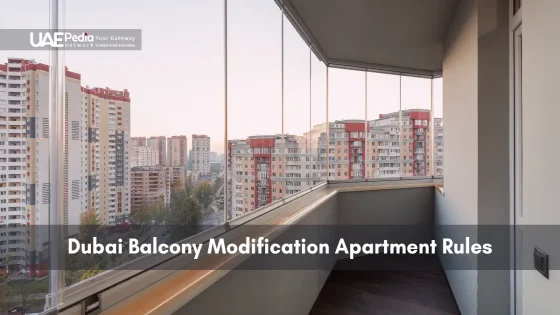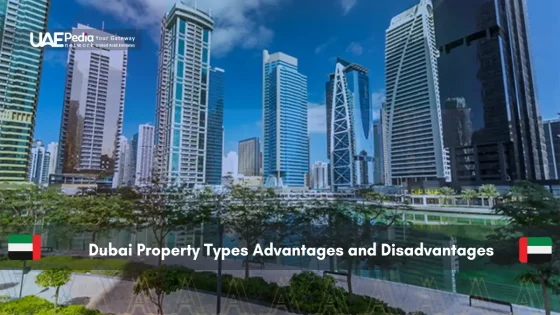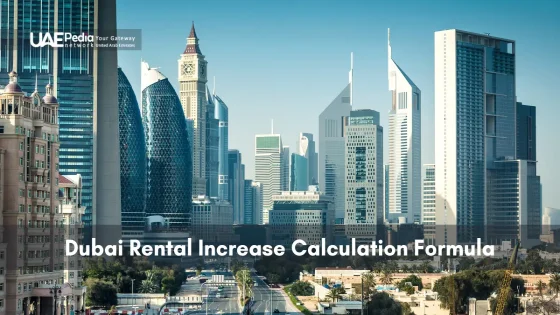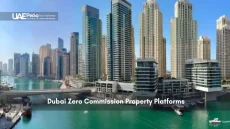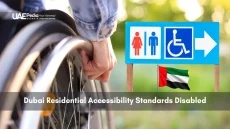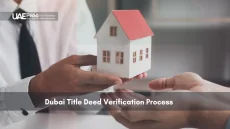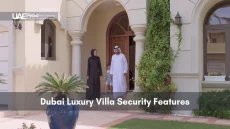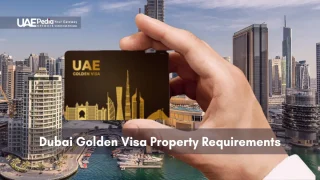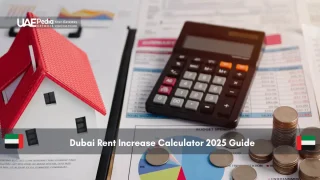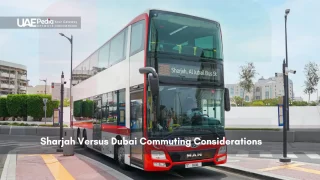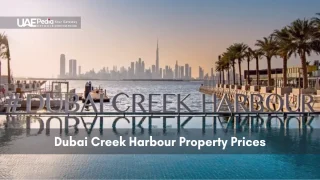What if the key to unlocking your dream balcony view isn’t just about design—but knowing which lines not to cross? In a city where architectural ambition meets meticulous urban planning, even small changes to your living space require thoughtful navigation.
Local guidelines here prioritize two things: safety for residents and preserving the sleek, unified look that defines the skyline. Whether you’re adding plants, updating railings, or reimagining layouts, every choice must align with community standards. Skip the paperwork, and those fines can arrive faster than a summer sandstorm.
This guide walks you through the essentials—from securing approvals to avoiding common oversights. We’ll decode permit processes, material restrictions, and why that “quick DIY fix” might cost more than you expect. Consider it your roadmap to creating a space that’s both personal and compliant.
Balcony modifications in Dubai require formal approval under the Dubai Building Code and Municipality regulations to ensure resident safety and maintain the uniform skyline. Alterations must respect the legal distinction between private balconies and communal terraces, adhere to permit procedures, and align with developer-specific guidelines. Early consultation with building management and submission of detailed plans can prevent enforcement actions and fines.
Key technical requirements include railings at least 1,200 mm high with vertical posts spaced no more than 100 mm apart, parapet walls combined with railings reaching at least 1,100 mm, and use of approved materials such as tempered glass with metal framing or fire-retardant treated wood. Non-compliant changes—such as extending flooring beyond the original footprint or installing permanent shading structures—can incur fines starting at AED 500 and escalate for repeat violations. Regular inspections, maintenance of safety features, and adherence to weight limits for furnishings complete the compliance framework.
- Why these standards protect your safety and your building’s value
- How to balance creativity with community guidelines
Understanding Balconies in Dubai
Ever stood on your elevated outdoor space wondering if it’s technically a balcony or a terrace? You’re not alone. Let’s clear the air—and the legal definitions—so your design plans start on solid ground.
Definition and Key Characteristics
Under local laws, a balcony isn’t just any outdoor platform. The Dubai Building Code specifies it must:
- Protrude from the building’s main structure
- Be accessible directly from interior rooms
- Have permanent railings or barriers
Think of those glass-fronted extensions in Downtown high-rises—they’re classic examples. Unlike terraces, which sit atop buildings and often serve communal areas, balconies are private extensions of your living space.
Differences Between Balconies and Terraces
Confusion usually hits when comparing these two. Here’s the breakdown:
| Feature | Balcony | Terrace | Why It Matters |
|---|---|---|---|
| Location | Attached to individual units | Rooftop or ground-level | Impacts privacy and ownership rights |
| Access | Direct from interior rooms | Via common areas | Affects renovation permissions |
| Structural Support | Integrated with building frame | Separate foundation | Changes safety requirements |
Take the Jumeirah Beach Residence towers—their cantilevered platforms offering sea views qualify as balconies, while the shared rooftop lounges with pool access are terraces. Knowing this distinction helps avoid permit headaches later.
Why sweat these details? Design choices like railing materials or planter placements hinge on these classifications. Get it wrong, and you might redesign twice—once for creativity, once for compliance.
Read More:
Overview of Dubai Municipality Regulations
Behind every skyline silhouette lies a team ensuring every detail aligns with the city’s vision. The Dubai Municipality acts as this guardian—crafting laws and regulations that keep buildings safe while maintaining that iconic architectural harmony we all love.
Their inspectors aren’t just clipboard-wielding enforcers. Think of them as neighborhood superheroes, conducting surprise visits to verify railings, structural loads, and material safety. One resident learned this the hard way after installing ornate metalwork without permits—their “upgrade” was flagged within days, leading to fines and mandatory removal.
Why does this matter to you? Local guidelines protect two things: your morning coffee view (no sudden construction next door) and your property’s long-term value. Non-compliant changes can trigger anything from warning notices to costly reversals—like the pentowner who had to dismantle a glass extension blocking fire escape routes.
Here’s the good news: working with the Dubai Municipality’s framework doesn’t stifle creativity. It’s like having a skilled editor for your design ideas—trimming risks while amplifying what makes your space uniquely yours. After all, those gleaming towers didn’t earn their postcard-perfect reputation by accident.
Essential Construction Guidelines for Dubai Balconies
Imagine your outdoor oasis as a puzzle where every piece—from railings to floorboards—must lock into place for safety and style. The city’s technical playbook transforms complex engineering into clear guardrails for your creative vision.
Safety Starts With Numbers
That sweeping view deserves protection. Railings must reach at least 1200 mm—roughly the height of a standard kitchen counter—to prevent accidental leans from becoming disasters. Vertical posts supporting these barriers can’t be spaced wider than 100 mm apart. Why? A toddler’s head measures about 115 mm across. These gaps are intentional life-savers.
“Structural integrity begins with precise measurements—they’re non-negotiable.”
Guarding Your Horizons
Parapet walls—the low barriers at your platform’s edge—require equal attention. They must stand 1100 mm tall if combined with railings, creating layered protection. Materials matter too: tempered glass panels need metal frames, while wooden slats demand fire-retardant treatments.
| Feature | Requirement | Purpose |
|---|---|---|
| Railing Height | ≥1200 mm | Prevents falls |
| Post Spacing | ≤100 mm | Blocks small objects |
| Parapet Height | ≥1100 mm | Adds secondary barrier |
Skip these guidelines, and penalties hit harder than midday desert heat—think AED 5,000 fines plus mandatory rebuilds. But here’s the silver lining: meeting standards doesn’t mean sacrificing beauty. Those vertical posts? Space them evenly, and they’ll frame your cityscape views like art gallery partitions.
Safety isn’t just a checkbox here—it’s the foundation letting your design dreams soar without turbulence. After all, the best outdoor spaces blend peace of mind with Pinterest-worthy aesthetics.
dubai balcony modification apartment rules
What’s the secret to a stunning yet compliant balcony makeover? It starts with understanding why these guidelines exist—they’re not red tape, but guardrails protecting everyone’s skyline experience.
Local standards ensure structural safety while preserving that iconic architectural harmony. Think of them as invisible threads holding together the city’s visual symphony. One resident learned this after replacing glass barriers with ornate metalwork—only to face fines and a mandated revert. Their “upgrade” disrupted fire safety protocols.
Here’s what works versus what doesn’t:
| Approved Changes | Non-Compliant Moves | Why It Matters |
|---|---|---|
| Adding planters under 50 cm | Extending flooring beyond original footprint | Prevents overloading structural supports |
| Upgrading railings with pre-approved designs | Installing permanent shading structures | Maintains building’s exterior uniformity |
Always consult your building management before purchasing materials. A quick approval request can save weeks of rework. Remember, these regulations aren’t about limiting creativity—they’re about ensuring your morning coffee spot remains safe for years.
One community in Marina showcases this balance perfectly. Residents collaborated with architects to design foldable furniture that meets weight limits while maximizing space. The result? Personal style within shared standards.
When in doubt, tap into local expertise. Authorities offer free consultation sessions to review plans—a small step that turns “What if?” into “Done right.”
Navigating AED Fines and Penalties
Ever wondered how a single design choice could cost more than your monthly coffee budget? Let’s talk numbers—and why cutting corners here might drain your wallet faster than a desert mirage.
Understanding the Fine Structure
First-time missteps often start at AED 500—equivalent to a high-end dinner for two. Common triggers include:
- Blocked emergency exits with furniture (AED 750)
- Unauthorized railing replacements (AED 1,200)
- Flammable decor creating fire risks (AED 1,500+)
Picture this: stacking wooden crates against glass barriers might seem rustic-chic. But if those materials ignite during summer’s 122°F peaks? That’s not just a safety hazard—it’s a fast track to quadruple fines.
Consequences of Non-Compliance
Repeat offenses? Penalties escalate quicker than sand dunes in a shamal wind. Three violations in a year could mean:
| Offense | Fine | Additional Action |
|---|---|---|
| Third violation | AED 2,500 | Mandatory safety workshop |
| Fire hazard neglect | AED 5,000 | Structural inspection fees |
One resident learned this after ignoring warnings about overloaded planters. Their AED 3,800 total bill included emergency reinforcement costs. Ouch.
Here’s your playbook: Always submit renovation sketches to building management first. Use flame-retardant fabrics for curtains. Keep pathways clear—those 36-inch emergency access rules exist for reasons hotter than July asphalt.
Remember, these guardrails aren’t about cramping your style. They’re the invisible hands keeping your morning yoga sessions safe—and your bank account intact.
Step-by-Step Guide to Balcony Modifications
Ready to transform your elevated space but unsure where to start? Let’s break it down like assembling IKEA furniture—with clear instructions and zero missing screws. Follow this roadmap to blend creativity with compliance seamlessly.
Blueprint Before Build
Begin with a coffee-and-sketch session. Measure your area, noting existing structure elements like support beams. Then:
- Consult your building’s management for design restrictions
- Submit plans to local authorities for permit approval
- Obtain contractor licenses matching project scope
“Approval timelines average 14 business days—factor this into your schedule.”
Safety Meets Style
Once permits land in your inbox, focus on upgrades that serve dual purposes. Residents must prioritize these enhancements:
| Upgrade | Regulation Alignment | Smart Bonus |
|---|---|---|
| Anti-slip flooring | Meets wet surface standards | Reduces cleaning frequency |
| Modular planters | Stays under weight limits | Allows seasonal rearrangements |
| LED rail lighting | Low-voltage compliance | Cuts energy usage by 60% |
Budget pro tip: Allocate 15% extra for unexpected material costs. One community near Business Bay saved 22% by bulk-ordering supplies with neighbors—check if your building allows group discounts.
Wrap up with a final inspection. Authorities will verify measurements and material safety certificates. Remember: these regulations aren’t hurdles—they’re quality checks ensuring your morning tea spot withstands time and weather.
Safe Balcony Usage Practices
Your elevated retreat should feel like a sanctuary—not a hazard zone. Simple habits can turn potential risks into peace of mind, letting you savor sunset views without second-guessing.
Guardrails for Daily Living
Start with access control. Install childproof locks on doors leading outside, and store keys beyond little hands’ reach. One resident’s quick grocery run turned into a close call when their toddler figured out the sliding door latch. Supervision matters: always accompany kids and pets outdoors, even for “just a minute.”
Furniture placement plays a bigger role than you’d think. Follow weight limits listed on product tags—that oversized loveseat might exceed structural capacity. Opt for foldable chairs instead, which you can tuck away during gusty days.
- Keep pathways clear: maintain 24-inch walkways for easy movement
- Secure loose items: use bungee cords for potted plants during wind alerts
- Check railings monthly: tighten screws, test stability
Smoking outdoors? Use deep ashtrays and never flick embers over the edge. A high-rise resident learned this after wind carried their cigarette butt onto a neighbor’s drying laundry—sparking tensions (and nearly a fire). Moderate alcohol consumption here isn’t just about etiquette; tipsy leans against barriers account for 18% of annual incidents.
Pro tip: Schedule seasonal maintenance checks. Clear drainage holes to prevent water pooling, and reseal wooden surfaces before summer’s heat warps them. These small acts ensure your sky-high haven stays as reliable as your morning coffee ritual.
Safe Decoration and Storage Guidelines
Transforming your outdoor space into a stylish retreat requires more than good taste—it demands smart compliance. Let’s explore how to add personality while keeping safety front-and-center.
Approved Decorative Modifications
Lightweight, removable upgrades work best. Think weather-resistant cushions in bold geometric patterns or modular planters with drought-tolerant succulents. These choices add flair without straining structural limits. Removable LED string lights? Perfect for evening ambiance—just ensure they’re low-voltage and battery-operated.
Approved ideas include:
- Wall-mounted vertical gardens using pre-approved brackets
- Foldable bamboo chairs that stay under weight limits
- Magnetic art panels for seasonal displays
Items and Practices to Avoid
Some temptations are strictly prohibited for good reason. Heavy furniture like wooden dining sets can overload supports. Hanging laundry might seem practical, but billowing fabrics risk entanglement during high winds. Permanent curtains? They’re strictly prohibited due to fire safety concerns.
| Approved Items | Strictly Prohibited | Why It Matters |
|---|---|---|
| Plastic storage bins | Metal cabinets | Prevents corrosion & overloading |
| Removable decor | Wall-mounted TVs | Avoids electrical hazards |
Clutter isn’t just unsightly—it’s dangerous. That stack of boxes becomes a wind projectile. One resident learned this when stored gardening tools slid during a storm, cracking a glass barrier. Keep pathways clear, and use under-seat storage for small items.
Remember: these rules aren’t about limiting joy. They’re the invisible framework letting your creative touches shine safely. A tidy space means more room for sunset yoga sessions—and peace of mind knowing your family’s protected.
Developer and Property-Specific Rules
Ever felt like your creative vision needs approval from both city planners and your neighbor’s HOA? Welcome to the layered world of property guidelines—where community aesthetics meet structural safety in unexpected ways.
Understanding Developer Guidelines
Buildings aren’t just concrete and glass—they’re expressions of a developer’s vision. Major players like Emaar require railings to match their signature brushed-metal finishes, while Nakheel often mandates drought-resistant plants for coastal properties. These rules add texture to municipal standards, creating harmony across neighborhoods.
Consider this comparison from two iconic developments:
| Developer | Material Rules | Design Restrictions |
|---|---|---|
| Emaar | Approved metal alloys only | No hanging planters over edges |
| Nakheel | UV-resistant polymers | Maximum 3 potted plants per sqm |
“Our guidelines protect both individual expression and collective identity—like notes in a symphony.”
Getting approval? Start by emailing your building authorities with scaled sketches. Most respond within 10 days with revision notes. One resident in Downtown learned this after submitting bamboo screen ideas—they worked with architects to create foldable versions meeting both safety and style codes.
Always check your ownership agreement’s fine print. That “minor adjustment” might need triple signatures. But here’s the payoff: compliant creativity preserves your view—and neighborly goodwill—for countless sunset moments.
Balcony Safety for Families
Imagine your little ones chasing sunlight across a safe, worry-free outdoor haven—where every giggle is protected by invisible safeguards. Creating this peace of mind starts with smart design choices tailored for tiny explorers and furry friends.
Guardrails for Curious Minds
Vertical railings with gaps narrower than 4 inches prevent climbing attempts. Install childproof locks at least 54 inches high on access doors—out of reach but easy for adults. One family’s quick fix? Adding magnetic cabinet locks to sliding glass doors. “It stopped our toddler’s Houdini acts instantly,” they shared.
For pets, consider these steps:
- Use non-toxic plants in elevated planters
- Secure water bowls to prevent tipping
- Avoid leaving food unattended (attracts birds)
Layered Protection Systems
Residents must audit their spaces seasonally. That decorative pebble collection? Replace it with soft artificial turf—choking hazards vanish, cushioning falls. Temporary safety nets add extra security for climbing-prone cats or adventurous parrots.
“Prevention isn’t about restricting joy—it’s about designing freedom within safe boundaries.”
| Feature | Child Benefit | Pet Benefit |
|---|---|---|
| Self-closing gates | Blocks unsupervised access | Contains escape artists |
| Non-slip surfaces | Reduces skinned knees | Prevents paw injuries |
These modifications do more than protect—they preserve your view’s magic. Children grow, pets age, but secure spaces let families savor golden-hour snuggles for years. When in doubt, residents must consult safety specialists. Many offer free assessments to turn “What if?” into “All clear.”
Compliance and Inspection Protocols
Think of inspections as your building’s annual physical—preventative care ensuring long-term health. Local authorities conduct unannounced checks like clockwork, verifying structural elements and material compliance. Their focus? Railings, load-bearing walls, and emergency access points. One resident described the process as “a five-star hotel review for safety standards.”
When the Doorbell Rings Unexpectedly
Inspectors typically arrive during business hours, checking:
- Railing stability with pressure tests
- Fire escape pathway clearance
- Documentation of recent modifications
You’ll receive a digital report within 48 hours detailing findings. Critical issues require immediate action—like the time weathered support beams prompted a 72-hour repair mandate. Minor notes? You’ll get 14 days to address them.
Your Role in Community Safety
Spot a neighbor’s questionable DIY project? Here’s how to report it without drama:
- Snap timestamped photos showing the concern
- Submit via the municipality’s mobile app
- Receive a case number for tracking
| Report Type | Response Time | Next Steps |
|---|---|---|
| Structural Risk | 24 hours | Site inspection scheduled |
| Aesthetic Violation | 5 days | Written notice issued |
“Keep every approval email and inspection report—they’re your golden tickets during disputes.”
Authorities aim for collaborative solutions. One family avoided fines by providing contractor certifications proving their planters met weight regulations. Remember: these protocols aren’t about catching mistakes—they’re guardrails letting everyone enjoy their views worry-free.
Enhancing Energy Efficiency and Aesthetic Appeal
Blending eco-smart choices with sleek design isn’t just possible—it’s how savvy spaces thrive under the sun. Today’s upgrades let you slash energy bills while crafting Instagram-worthy views that neighbors will envy.
Smart Upgrades That Shine
Solar-powered LED strips lining railings do double duty: they meet strict guidelines for low-voltage fixtures and create ambient evening lighting. Pair them with modular vertical gardens using drought-resistant succulents. These living walls cool the air naturally while staying under weight limits.
In Dubai Marina, one building transformed bland concrete slabs into lush retreats using foldable bamboo screens and retractable solar shades. “Our energy costs dropped 18%,” a resident shared, “and the appeal boosted our property value instantly.”
| Upgrade | Energy Savings | Aesthetic Bonus |
|---|---|---|
| Solar lighting | 65% reduction | Modern, minimalist glow |
| Reflective flooring | 22% cooler temps | Mirror-like sky views |
| Wind-resistant plants | Natural shading | Year-round greenery |
“The best designs marry innovation with intention—every watt saved amplifies beauty.”
Stick to neutral tones for furniture and add pops of color through removable cushions. This approach keeps renovations compliant while letting personal style shine. Remember: upgrades that follow guidelines protect your investment and maintain that coveted curb appeal.
Pro tip: Use thermal imaging apps during planning. They’ll show heat leaks to fix first—like that decorative metal railing absorbing afternoon sun. Swap it for composite materials, and watch comfort (and coffee hours) soar.
Maintaining Structural Integrity and Aesthetic Value
Your outdoor space ages like fine wine—with proper care, it only gets better. Regular upkeep preserves both safety and style, letting you enjoy sunsets without unexpected repairs. Think of it as a love letter to your view.
Ongoing Maintenance Best Practices
Set quarterly reminders for these quick checks:
- Inspect railings for rust or loose bolts
- Clear drainage channels to prevent water buildup
- Reseal wooden surfaces before summer heat
- Test door locks and childproof latches
One resident avoided major repairs by spotting hairline cracks during their monthly “coffee inspection.” They snapped photos, sent them to their contractor, and fixed the issue in a weekend.
Balancing Functionality with Design
Smart upgrades serve dual purposes. Reflective tiles cool surfaces while amplifying sunlight. Modular planters add greenery without permanent changes. Here’s how to merge practicality with flair:
| Feature | Functional Benefit | Style Boost |
|---|---|---|
| Anti-slip mats | Prevent falls | Add geometric patterns |
| Retractable shades | Block midday sun | Introduce neutral tones |
| Powder-coated metals | Resist corrosion | Match building accents |
“Schedule maintenance during cooler months—contractors have more availability, and materials cure properly.”
Partner with professionals who understand local guidelines. Many offer annual packages covering inspections and minor fixes. Proactive care saves up to 40% on long-term costs—money better spent on that Moroccan-style lounge set you’ve been eyeing.
Check out the below:
Final Thoughts on Dubai Balcony Modification Apartment Rules
Creating your ideal outdoor space blends vision with responsibility. Throughout this guide, we’ve explored how structural standards protect lives, while design guidelines preserve community beauty. Residents must view compliance not as a hurdle, but as the foundation for lasting value and safety.
Key takeaways? Always secure permits before upgrades. Choose materials that meet both aesthetic and load-bearing requirements. Regular maintenance keeps spaces secure against harsh weather—and costly fines.
Smart modifications do more than follow rules—they elevate living experiences. Imagine solar-lit evenings on surfaces cool enough for bare feet, or vertical gardens that thrive without straining walls. These choices reflect care for your home and neighbors.
Before finalizing plans, revisit your building’s specific codes. Partner with licensed professionals who understand local nuances. Remember: informed decisions create spaces where memories flourish safely.
Your actions today shape tomorrow’s skyline. Build wisely, and let every sunset enjoyed from your retreat whisper a story of thoughtful stewardship.
Railings must meet Dubai Municipality’s minimum height of 1.2 meters (1200mm) and have vertical posts spaced no wider than 10cm apart. Glass panels are allowed if they’re tempered and comply with safety standards—always get approval from building management first.
This violates aesthetic guidelines and could result in fines up to AED 500. Use retractable drying racks placed inward, and avoid dangling items that disrupt the building’s exterior appearance or pose safety risks.
Yes! Furniture shouldn’t block emergency exits or exceed weight limits. Opt for lightweight, weather-resistant pieces—avoid flammable materials. Always leave a 1-meter clear pathway for fire safety compliance.
Retractable shades are usually approved if they’re neutral-colored and don’t alter the building’s facade. Permanent structures like fixed roofs require permits. Check with your property manager before installing anything.
Many communities like JLT and Downtown Dubai ban balcony smoking due to fire hazards and neighbor complaints. Fines start at AED 2,000. Always check your building’s specific rules—some designate smoking zones.
Contact Dubai Municipality via their app or call center (800 900). Provide photos and unit details—authorities typically inspect within 48 hours. Anonymous reports are accepted, but false claims risk AED 1,000 penalties.
Small secured planters are okay if they don’t extend beyond the railing. Use non-corrosive brackets and avoid overwatering—excess moisture can damage structures. High-rises often ban hanging plants outdoors due to wind risks.
Using open-flame devices like grills can trigger AED 5,000 fines and immediate eviction in some towers. Electric grills are safer but still require written approval from building management first.
